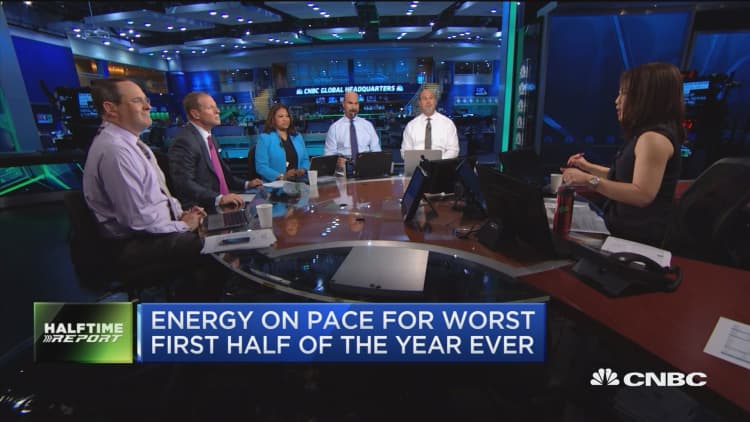Oil futures eased back after hitting a two-week high on Thursday, but U.S. crude still posted a sixth straight session of gains.
A decline in weekly U.S. crude production temporarily alleviated concerns about deepening oversupply. Crude prices slipped to the lowest in 10 months last week but have since rebounded more than 7 percent, stretching their bull run to the longest since April.
It is unclear, however, whether the bearish sentiment has abated in the oil market, given larger-than-usual inventories in the United States for both crude oil and key products like gasoline.
U.S. West Texas Intermediate (WTI) crude rose 19 cents to end Thursday's session at $44.93 a barrel. It posted an intraday high of $45.45, also a two-week peak.
Global benchmark futures were down 7 cents at $47.24 a barrel at 2:35 p.m. ET (1835 GMT), having touched a two-week high of $48.27 earlier in the session.

In recent weeks, funds have been unloading long speculative positions, reducing bets on higher prices while brokerages including Goldman Sachs and Barclays have cut their forecasts for crude prices for 2017. Goldman, on Wednesday, cut its forecast for U.S. crude for the next three months to $47.50 a barrel from $55.
"After the steep drop in oil prices of recent weeks, I believe that especially hedge funds saw nice buying momentum and lower U.S. crude production was the trigger to act," said Hans van Cleef, senior energy economist at ABN Amro.
U.S. government data showed on Wednesday that domestic crude production dropped by 100,000 barrels per day (bpd) to 9.3 million bpd last week, the steepest weekly fall since July 2016.
Some analysts and traders said the decline was related to temporary factors such as the shutdown of some oil production sites due to Tropical Storm Cindy in the Gulf of Mexico and maintenance in Alaska.
"These production outages are therefore likely to be made good again in the coming weeks, meaning that a noticeable rise in U.S. oil production can be expected. It is thus doubtful whether (the) price rise will really prove lasting," said analysts at Commerzbank.
There was additional support stemming from a decline in U.S. gasoline inventories.
"Gasoline inventories fell 894,000 barrels. This suggests demand is starting to pick up, after a slow start to the U.S. summer driving season," ANZ said in a note.

Global oil supplies remain ample despite output cuts by the Organization of the Petroleum Exporting Countries and other producers of 1.8 million bpd since January.
OPEC and its allies, trying to reduce a crude glut, agreed in May to extend the supply cut through March 2018. OPEC has exempted Nigeria and Libya from the curbs due to unrest that has sapped those countries' production.
"That's going to increase pressure on OPEC cuts," said Tony Scott, managing director of analytics at BTU Analytics in Denver. "As long as Libya and Nigeria can remain stable - Libya has ramped up several times over last couple of years and then the violence has come back."
Libyan oil production is now nearing 1 million bpd, a Libyan source with direct knowledge of the matter told Reuters.
Royal Dutch Shell on Wednesday lifted force majeure on Nigerian Bonny Light crude exports after pipeline repairs.
Analysts at investment bank Goldman Sachs said rising Nigerian and Libyan output, as well as a rise in U.S. shale oil drilling, would slow the drawdown in crude inventories.

